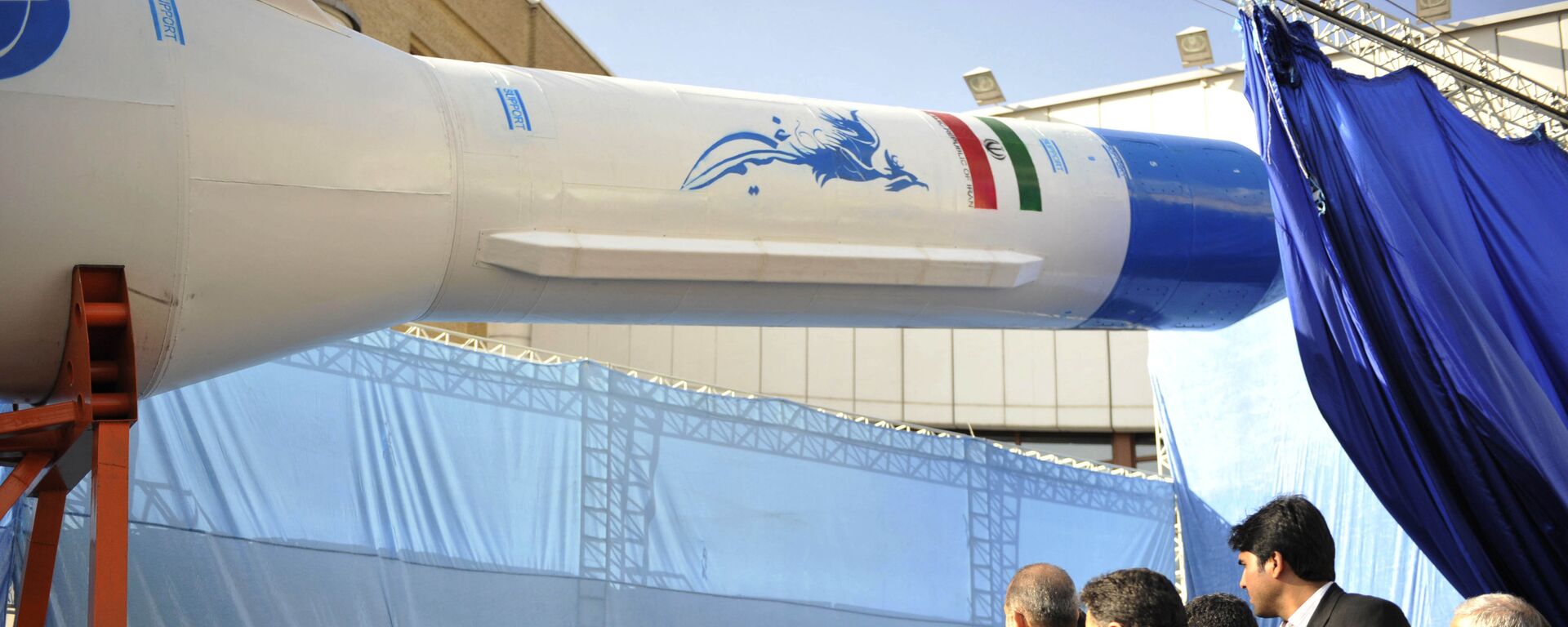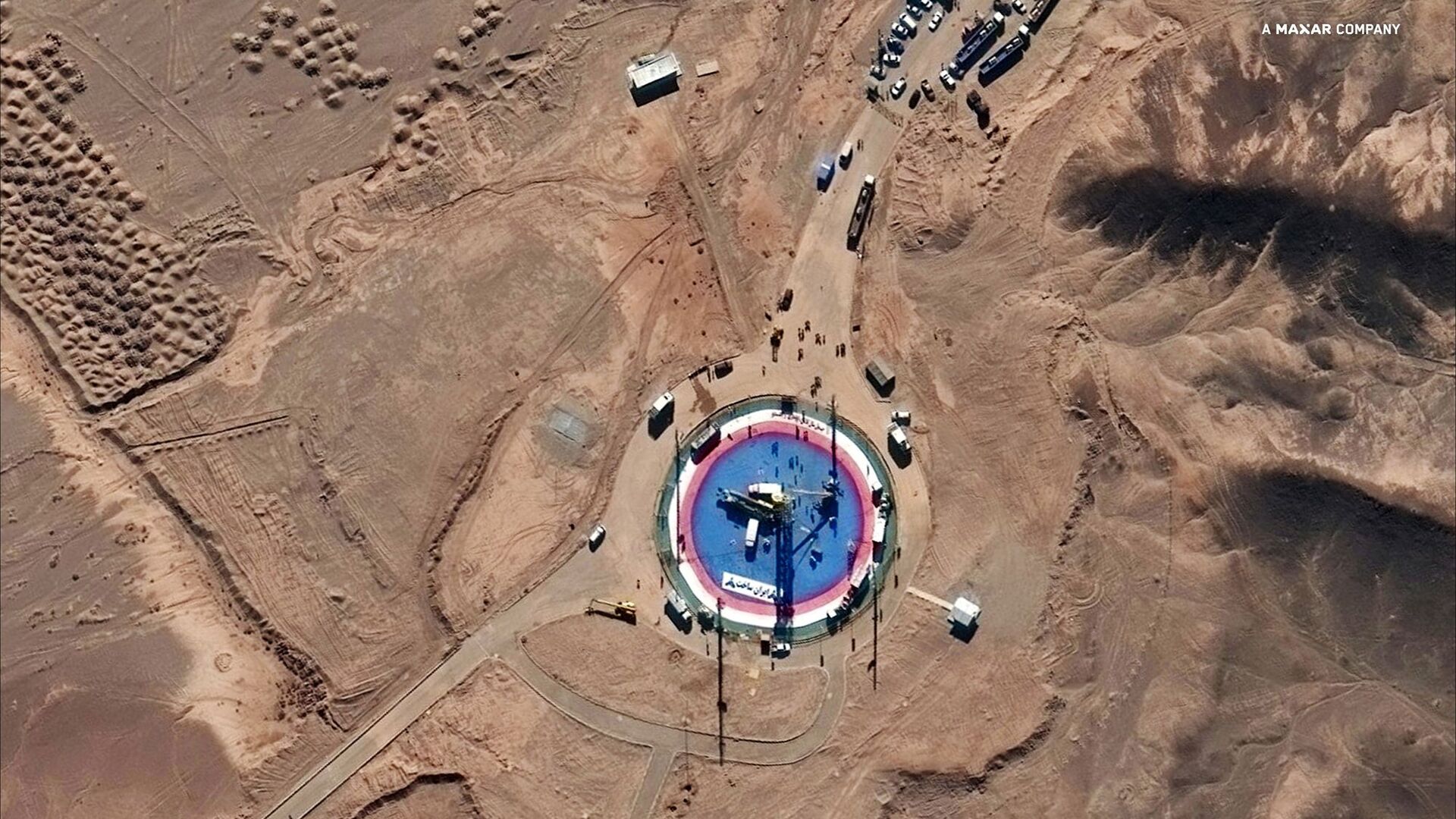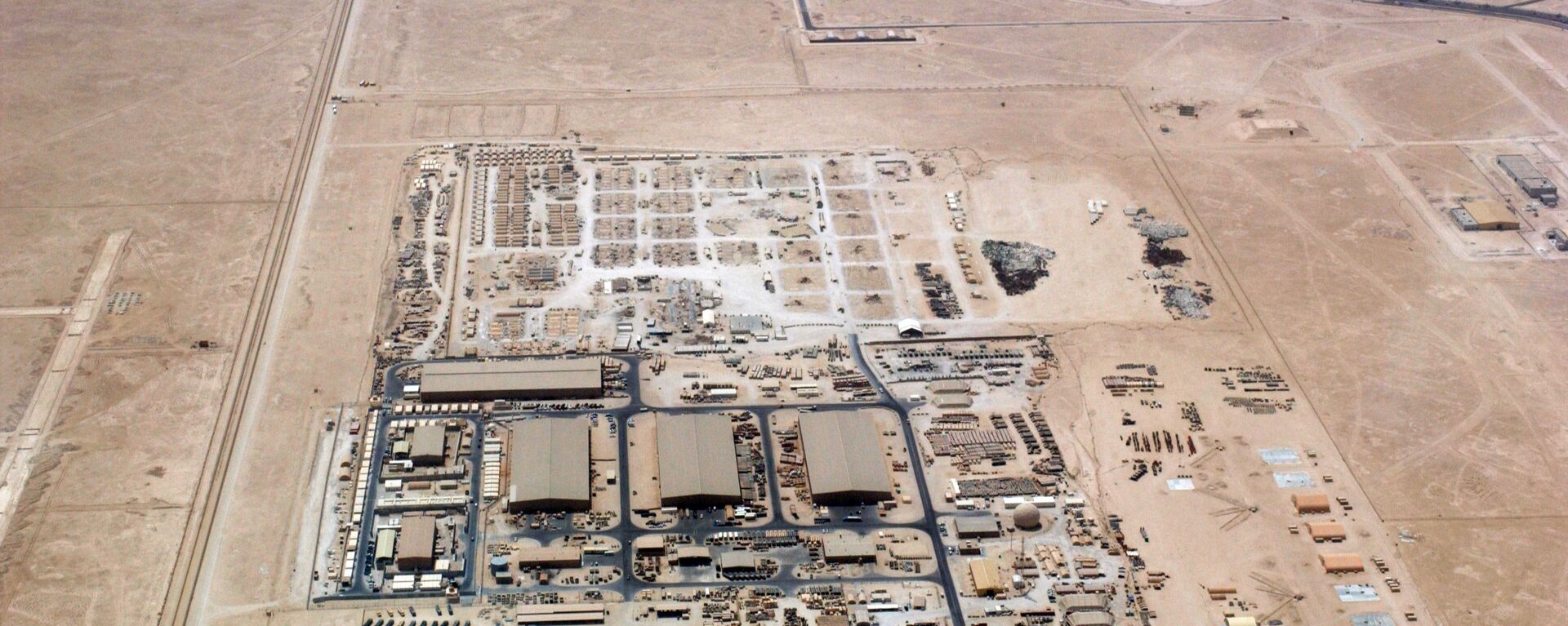https://sputnikglobe.com/20220101/iran-slaps-down-us-concerns-over-space-programme-after-satellite-launch-1091965452.html
Iran Slaps Down US ‘Concerns’ Over Space Programme After Satellite Launch
Iran Slaps Down US ‘Concerns’ Over Space Programme After Satellite Launch
Sputnik International
Iran launched a rocket carrying three satellites into space on Thursday. The US and France condemned the launch, and Washington called it a “proliferation... 01.01.2022, Sputnik International
2022-01-01T17:11+0000
2022-01-01T17:11+0000
2022-01-02T09:18+0000
america
iran
satellite
space rockets
https://cdn1.img.sputnikglobe.com/img/107220/00/1072200057_0:220:2001:1345_1920x0_80_0_0_b62775247f5c3d8355978cdf413ddfa9.jpg
Iranian Foreign Ministry spokesman Saeed Khatibzadeh slapped down US and European criticism of Tehran’s space launch, saying the Islamic Republic doesn’t really care about the “opinions” of others regarding the matter.After Thursday’s launch of the Simorgh space rocket, a US State Department spokesman said Washington “remains concerned with Iran’s development of space launch vehicles,” suggesting that these “pose a significant proliferation concern”.According to the spokesman, these rockets “incorporate technologies that are virtually identical to, and interchangeable with, those used in ballistic missiles, including longer-range systems,” and Thursday’s launch was a violation of United Nations Security Council Resolution 2231, which calls on Iran not to conduct any nuclear-capable missile testing.France also criticised the launch, with the French Foreign Ministry calling it “regrettable” amid “progress in the nuclear negotiations in Vienna".“We call on Iran not to launch further ballistic missiles designed to be capable of carrying nuclear weapons, including space launchers,” Paris said.The spokesman praised the efforts of Iranian rocket scientists’ and their homegrown scientific innovations in the field of aerospace technologies, pointing out that they have been accomplished in the face of illegal foreign sanctions.Mystery Space LaunchA Simorgh rocket carried three satellites into space on Thursday, with the payload reaching an altitude of 470km. Defence Ministry spokesman Ahmad Hosseini announced that the “performance of the space centre and the performance of the satellite carrier were adequate,” and that “the intended research goals of this launch were achieved”.NASA later reported that the satellites had apparently failed to reach their intended orbit, with no objects detected in the space they were expected to be occupying after the launch.Hosseini provided little additional information on the nature of the “space research mission". Earlier last month, Iranian media reported on preparations for the launch of four different satellites in the near future, including the Zafar 2 Earth-imaging microsatellite, the Pars 1 remote-sensing satellite, and the Nahid 1 and 2 low Earth orbit communications microsatellites.Iran has one of the most advanced home-grown space programmes in the Middle East, and in 2009 became the first Muslim nation independently to launch a satellite into orbit.The United States has consistently condemned the Iranian space programme’s activities, in part because of their perceived connections to the military. In 2020, after the US Department of Defense dismissed the Noor 1 military satellite as just a “tumbling webcam in space,” Iran trolled the Pentagon by releasing high-res images of Al-Udeid Air Base – America’s largest military facility in the Middle East, snapped by the satellite.Iran’s space programme has ambitious goals, including plans to send astronauts into orbit later in the decade, work on new more powerful solid fuel launch vehicles, satellites with an imaging accuracy of within one metre, and the creation of a new type of satellite capable of operating in geostationary orbit.
https://sputnikglobe.com/20211230/iran-launches-three-new-satellites-into-low-earth-orbit-1091912618.html
https://sputnikglobe.com/20200730/iranian-satellite-once-derided-as-tumbling-webcam-in-space-snaps-pics-of-uss-largest-mideast-base-1080015559.html
iran
Sputnik International
feedback@sputniknews.com
+74956456601
MIA „Rossiya Segodnya“
2022
News
en_EN
Sputnik International
feedback@sputniknews.com
+74956456601
MIA „Rossiya Segodnya“
Sputnik International
feedback@sputniknews.com
+74956456601
MIA „Rossiya Segodnya“
america, iran, satellite, space rockets
america, iran, satellite, space rockets
Iran Slaps Down US ‘Concerns’ Over Space Programme After Satellite Launch
17:11 GMT 01.01.2022 (Updated: 09:18 GMT 02.01.2022) Iran launched a rocket carrying three satellites into space on Thursday. The US and France condemned the launch, and Washington called it a “proliferation concern". Tehran has resisted all foreign efforts to put limits on its missile, rocket and space research efforts.
Iranian Foreign Ministry spokesman Saeed Khatibzadeh slapped down US and European criticism of Tehran’s space launch, saying the Islamic Republic doesn’t really care about the “opinions” of others regarding the matter.
“As previously stated, the Islamic Republic of Iran has the right to use peaceful technologies in the path of its scientific research development according to international standards, and in so doing, it will not await the opinions of some countries that seek to impose their dictates,” Khatibzadeh
said.
After Thursday’s launch of the Simorgh space rocket, a US State Department spokesman said Washington “remains concerned with Iran’s development of space launch vehicles,” suggesting that these “pose a significant proliferation concern”.
According to the spokesman, these rockets “incorporate technologies that are virtually identical to, and interchangeable with, those used in ballistic missiles, including longer-range systems,” and Thursday’s launch was a violation of United Nations Security Council Resolution 2231, which calls on Iran not to conduct any nuclear-capable missile testing.
France also criticised the launch, with the French Foreign Ministry calling it “regrettable” amid “progress in the nuclear negotiations in Vienna".
“We call on Iran not to launch further ballistic missiles designed to be capable of carrying nuclear weapons, including space launchers,” Paris said.
Khatibzadeh dismissed the state department’s logic, saying that “no resolution prevents the Islamic Republic from continuing its space programme and related experiments, including in the field of satellite carriers; thus, citing UNSC Resolution 2231 is purely fallacious and fundamentally untrue.”
The spokesman praised the efforts of Iranian rocket scientists’ and their homegrown scientific innovations in the field of aerospace technologies, pointing out that they have been accomplished in the face of illegal foreign sanctions.

30 December 2021, 10:42 GMT
A Simorgh rocket
carried three satellites into space on Thursday, with the payload reaching an altitude of 470km. Defence Ministry spokesman Ahmad Hosseini announced that the “performance of the space centre and the performance of the satellite carrier were adequate,” and that “the intended research goals of this launch were achieved”.
NASA later
reported that the satellites had apparently failed to reach their intended orbit, with no objects detected in the space they were expected to be occupying after the launch.
Hosseini provided little additional information on the nature of the “space research mission". Earlier last month, Iranian media reported on
preparations for the launch of four different satellites in the near future, including the Zafar 2 Earth-imaging microsatellite, the Pars 1 remote-sensing satellite, and the Nahid 1 and 2 low Earth orbit communications microsatellites.
Iran has one of the most advanced home-grown space programmes in the Middle East, and in 2009 became the first Muslim nation independently to launch a satellite into orbit.
The United States has consistently condemned the Iranian space programme’s activities, in part because of their perceived connections to the military. In 2020, after the US Department of Defense dismissed the Noor 1 military satellite as just a “tumbling webcam in space,” Iran
trolled the Pentagon by releasing high-res images of Al-Udeid Air Base – America’s largest military facility in the Middle East, snapped by the satellite.
Iran’s space programme has ambitious goals, including
plans to send astronauts into orbit later in the decade, work on new more powerful solid fuel launch vehicles, satellites with an imaging accuracy of within one metre, and the creation of a new type of satellite capable of operating in geostationary orbit.



